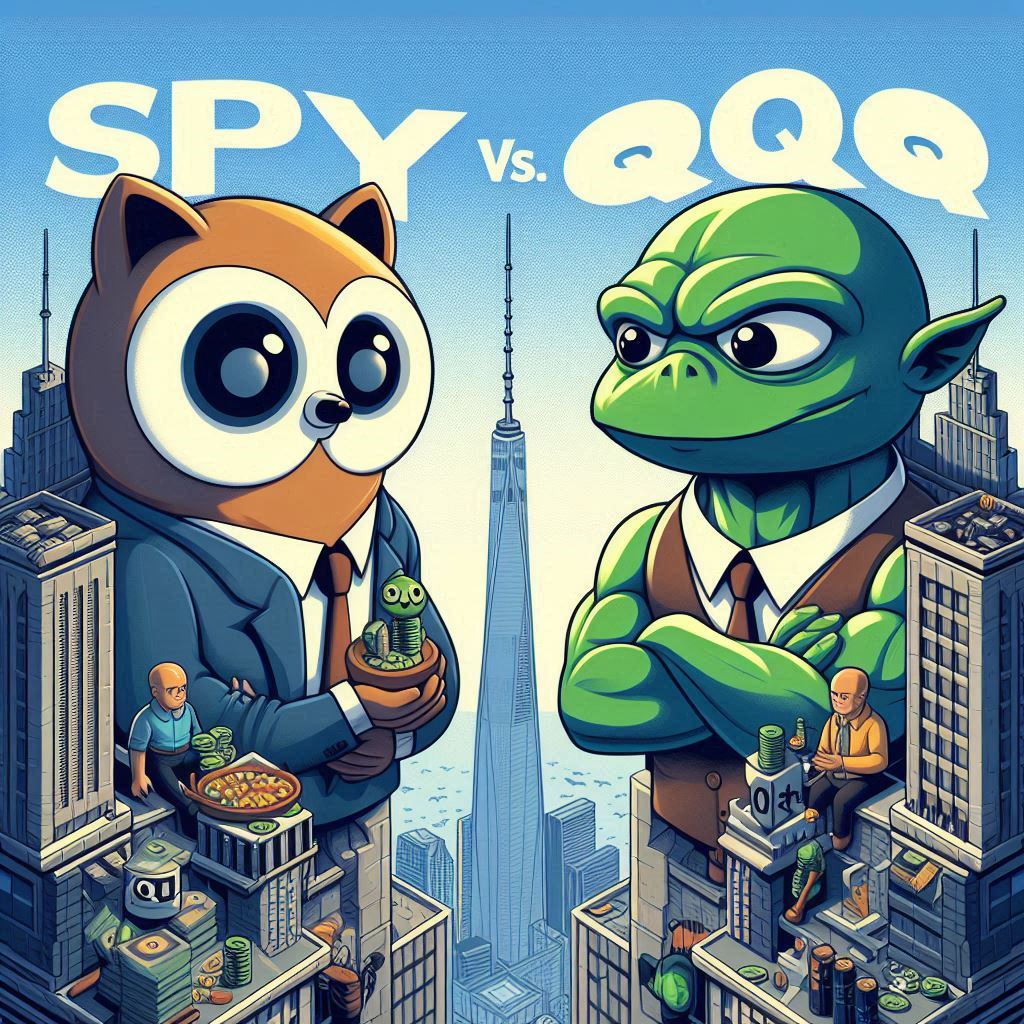SPY vs. QQQ: Which ETF Is the Better Investment?

SPY vs. QQQ: Which ETF Is the Better Investment?
When it comes to choosing a broad-market ETF, two giants often top the list: SPY and QQQ. Both are among the most traded ETFs in the world, offering liquidity, diversification, and relatively low fees. But which one is right for your portfolio?
In this article, we’ll break down the key differences between SPY and QQQ, their performance histories, what sectors they focus on, and how to decide which might be the better fit for your investment goals.
What Are SPY and QQQ?
SPY (SPDR S&P 500 ETF Trust)
- Tracks the S&P 500, representing 500 of the largest publicly traded U.S. companies.
- Offers broad exposure across all sectors of the U.S. economy.
- Tends to be more balanced between tech, healthcare, financials, and industrials.
QQQ (Invesco QQQ Trust)
- Tracks the Nasdaq-100, which includes 100 of the largest non-financial companies listed on the Nasdaq.
- Has a heavier concentration in technology and growth stocks like Apple, Microsoft, Nvidia, and Amazon.
- Excludes financial companies, making it more tech-heavy and potentially more volatile.
Historical Performance: Growth vs. Stability
Over the past decade, QQQ has generally outperformed SPY, largely due to the explosive growth of tech giants. But that performance comes with higher volatility, especially during market pullbacks.
| Period | SPY Return | QQQ Return |
|---|---|---|
| 5-Year Annualized | ~11% | ~15% |
| 10-Year Annualized | ~12% | ~17% |
| Data as of early 2025; exact figures vary slightly depending on source. |
Key Takeaway:
- If you’re seeking long-term growth and are comfortable with higher risk, QQQ may be more appealing.
- If you prefer stability and diversification, SPY is a solid foundation for any portfolio.
Sector Exposure: What Are You Really Investing In?
| Sector | SPY Allocation | QQQ Allocation |
|---|---|---|
| Technology | ~28% | ~50%+ |
| Healthcare | ~13% | <5% |
| Financials | ~12% | 0% |
| Consumer Discretionary | ~10% | ~17% |
QQQ is less diversified and more dependent on the performance of a few mega-cap tech companies. This can be a strength during bull markets — and a weakness during downturns.
Expense Ratios and Liquidity
| Metric | SPY | QQQ |
|---|---|---|
| Expense Ratio | 0.09% | 0.20% |
| Average Daily Volume | Extremely high | Extremely high |
Both ETFs are highly liquid and widely traded, making them easy to buy and sell at any time.
Which ETF Should You Invest In?
It depends on your investment style and risk tolerance.
- Choose SPY if you want broader market exposure, lower volatility, and a more conservative approach.
- Choose QQQ if you’re aiming for higher growth and are comfortable with tech sector risk.
Some investors even hold both, using SPY for a core allocation and QQQ for a growth tilt.
Final Thoughts
Both SPY and QQQ are excellent ETFs backed by strong indexes and track records. The real question isn’t which one is “better,” but which one aligns with your personal investing goals, timeline, and appetite for risk.
Still unsure? A simple rule:
- If you’re new to investing or building a long-term retirement portfolio, start with SPY.
- If you already hold diversified assets and want to lean into tech and growth, consider adding QQQ.



